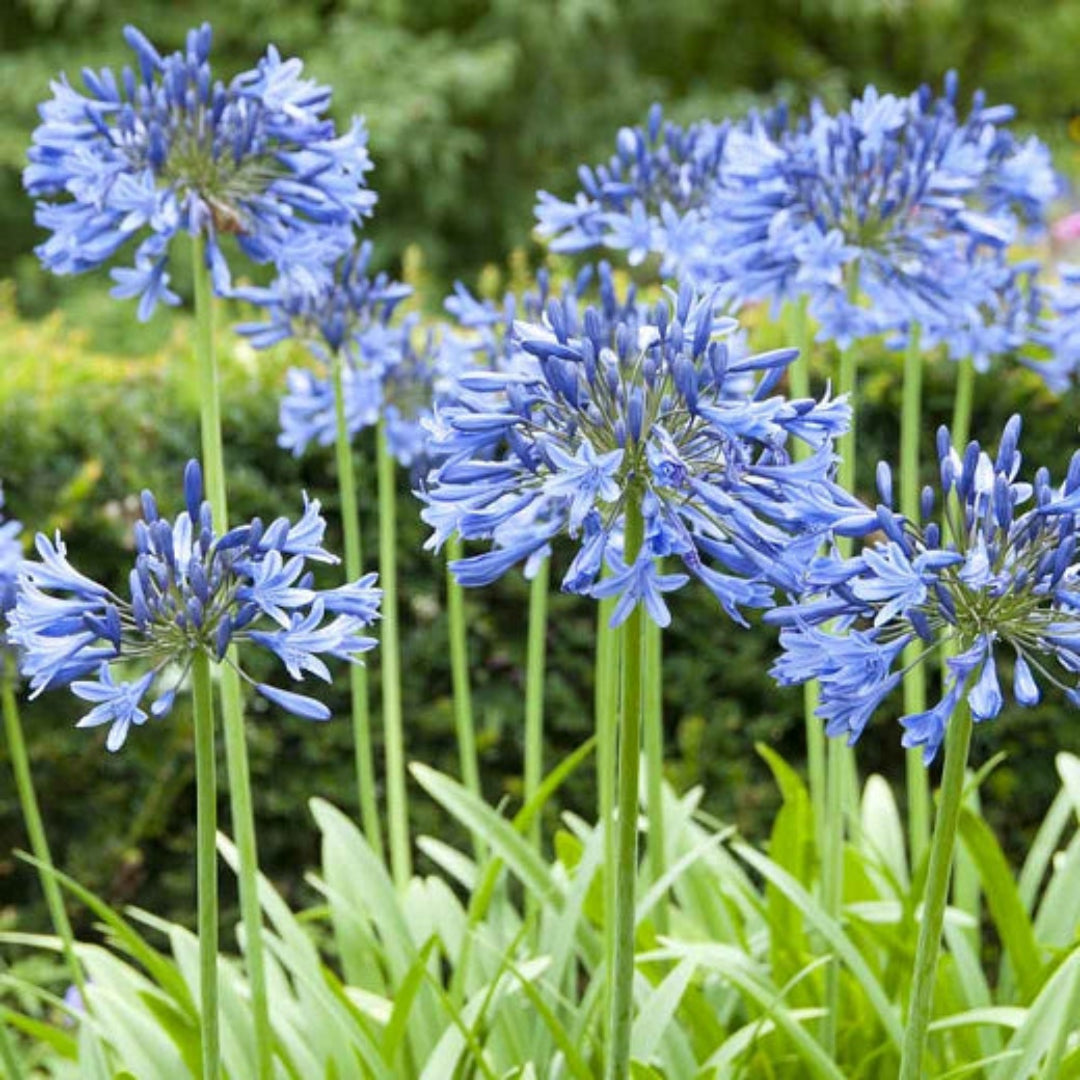Agapanthus Varieties: Picking the most effective for Your Landscape
Agapanthus Varieties: Picking the most effective for Your Landscape
Blog Article
Grasping the Art of Agapanthus Treatment: Necessary Steps for Healthy And Balanced Growth and Vivid Blooms
In the realm of horticulture, the growing of agapanthus stands as a rewarding endeavor for those who look for to support these classy blooming plants. From selecting the best selection to grasping pruning techniques, the trip towards growing growing agapanthus plants is multifaceted and holds the crucial to unlocking the full capacity of these agricultural treasures.

Picking the Right Agapanthus Selection

When picking the best Agapanthus selection for your garden, take into consideration factors such as environment viability, blossom shade, and development behavior. Agapanthus, frequently referred to as Lily of the Nile or African lily, can be found in a selection of shades varying from shades of blue and purple to white. Choose a bloom color that enhances your existing garden combination to produce a harmonious landscape. Additionally, consider the environment in your region to guarantee the Agapanthus range you choose can grow in your particular conditions. Some ranges are much more tolerant of cool temperatures, while others choose warmer environments. Comprehending the development habit of various Agapanthus ranges is essential for proper positioning within your yard. Some ranges have a clumping development behavior, ideal for containers or borders, while others have a more dispersing nature, ideal for ground cover or mass growings. By thoroughly evaluating these aspects, you can select the ideal Agapanthus range to boost the charm of your garden.
Suitable Planting Problems
Thinking about the optimal environmental needs is essential for successful Agapanthus farming. Agapanthus flourishes in well-draining dirt with a slightly acidic to neutral pH level. When growing, select a place that receives complete sunlight to partial color. In hotter climates, giving some afternoon color can protect against scorching of the fallen leaves. Agapanthus plants are delicate to cold temperature levels and should be protected from frost throughout winter season.
To guarantee healthy and balanced growth and lively flowers, plant Agapanthus bulbs at a depth of about 2-4 inches and area them 8-12 inches apart. Mulching around the base of the plants aids keep moisture and reduces weed growth.
Watering and Feeding Tips
Preserving proper dampness levels and providing necessary nutrients are key aspects in the care regimen for Agapanthus plants. It is vital to strike a balance when it More Bonuses comes to watering Agapanthus. These plants choose constantly moist dirt but are vulnerable to root rot if overwatered. Throughout the expanding season, water deeply when a week, making certain the soil is well-draining to prevent waterlogging. In hotter environments or during durations of dry spell, more constant watering may be needed to maintain the soil uniformly damp. However, reduce watering in the winter to protect against waterlogged conditions.
Feeding Agapanthus is essential for promoting healthy and balanced development and prolific flowers. Apply a well balanced fertilizer, such as a 10-10-10 formula, in the early springtime as new growth advice arises. By adhering to these watering and fertilizing pointers, you can ensure your Agapanthus plants grow and produce lively, durable blossoms.
Pruning Methods for Agapanthus
Pruning Agapanthus plants at the proper times and with appropriate strategies is essential for maintaining their health and wellness and promoting ideal development and blooming. The optimal time to prune Agapanthus is in late winter or early springtime prior to new growth arises.
For flowered stems, wait till the blossoms have actually withered and after that trim them back to the base. This not just cleans the plant's appearance yet also urges the development of brand-new blossom buds. Deadheading invested blossoms can additionally reroute the plant's energy into creating more blossoms instead i thought about this of setting seeds. However, if you wish to collect seeds for proliferation, leave some blossoms to fully grown and completely dry on the plant.
Bear in mind to make use of clean, sharp tools to make precise cuts and minimize the danger of presenting conditions. Agapanthus. Normal pruning will certainly aid keep your Agapanthus looking healthy and balanced and cool while making certain an abundant display of gorgeous blossoms
Taking Care Of Usual Pests and Conditions
After guaranteeing appropriate trimming techniques for Agapanthus, it is essential to attend to typical insects and conditions that can affect the health and wellness and vitality of these plants. One common pest that impacts Agapanthus is the Agapanthus gall midget.
Additionally, Agapanthus plants can experience from root rot if they are grown in inadequately draining soil. By being cautious and taking prompt action against illness and insects, you can aid your Agapanthus plants grow and produce vivid blossoms. Agapanthus.

Final Thought
Finally, mastering the art of agapanthus care entails selecting the best selection, providing suitable planting problems, appropriate watering and fertilizing, suitable pruning strategies, and addressing typical parasites and conditions. By adhering to these essential steps, you can guarantee healthy and balanced development and dynamic flowers for your agapanthus plants. Keep in mind to on a regular basis keep track of and preserve your plants to promote their general wellness and long life.
To make sure healthy development and vivid blossoms, plant Agapanthus bulbs at a deepness of concerning 2-4 inches and space them 8-12 inches apart. By adhering to these watering and fertilizing pointers, you can guarantee your Agapanthus plants grow and produce vivid, long-lasting blooms.
One typical bug that impacts Agapanthus is the Agapanthus gall midge. Furthermore, Agapanthus plants can endure from root rot if they are planted in inadequately draining pipes soil. By adhering to these essential actions, you can guarantee healthy growth and dynamic flowers for your agapanthus plants.
Report this page